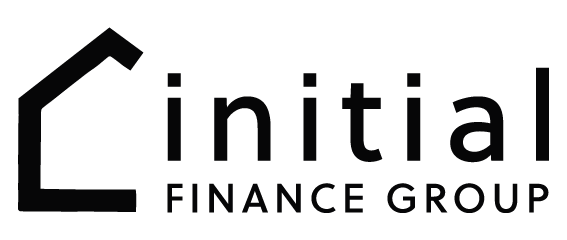Your choice of the many types of home loans can impact your financial well-being for years, influencing everything from your monthly budget to your long-term financial goals.
In this guide, we’ll embark on a journey through the diverse landscape of the different types of home loans. We’ll shed light on their intricacies, exploring their advantages, disadvantages, and eligibility criteria. Take this as the first step in making informed decisions about your home financing.
Conventional Home Loans
Amongst all types of home loans, only conventional home loans are offered by financial institutions without government backing. One may purchase a primary residence, a second home, or investment properties with conventional home loans for varying amounts. These loans come with various term options, usually ranging from 15 to 30 years, offering repayment flexibility.
Borrowers can choose between fixed-rate and variable-rate options, depending on their preference for stable or fluctuating interest rates. For borrowers with a substantial down payment (typically 20% or more), there’s no need for lenders’ mortgage insurance (LMI). These loans are available for various property types, including apartments, houses, and townhouses.
In contrast with this, conventional loans often have more stringent credit scores and income requirements compared to some government-backed loans. While a smaller down payment is possible, a larger down payment is typically required to avoid LMI, which can be challenging for first-time buyers. If you opt for a variable-rate conventional loan, you may be exposed to fluctuations in interest rates.
Eligibility for conventional home loans in Australia typically involves:
– Credit Score: A good credit score is essential for securing a conventional loan.
– Income and Employment: Lenders assess your income and employment stability to ensure you can meet your repayments.
– Debt-to-Income Ratio: Lenders will examine your existing debts to determine if you can handle additional debt.
– Property Appraisal: The property you purchase must meet the lender’s appraisal standards.
The down payment requirements for these types of home loans in Australia can vary. While you can secure a loan with as little as a 5% down payment, aim for a 20% down payment to avoid LMI. Saving for a larger down payment can save you money in the long run, as it reduces your borrowing costs.
VA Loans
VA loans are a well-deserved benefit for those who have bravely served or continue to serve in the Australian Defense Force. This exclusivity means that these individuals can access home financing options that are not only competitive but also come with special perks you won’t find with conventional loans.
One of the standout features of VA loans is that they often require no down payment and are flexible with credit score requirements. It offers the Interest Rate Reduction Refinance Loan (IRRRL) program, making it easier for veterans to refinance their existing VA loans to lower interest rates. Unlike many other types of home loans, this does not require private mortgage insurance (PMI), which can result in substantial savings.
While VA loans offer significant benefits, they are subject to specific eligibility criteria, including:
– Service History: To be eligible, you must have served a certain time in the military, typically meeting the minimum service requirements.
– Discharge Status: Your discharge status can impact your eligibility. Generally, an honorable discharge is required.
– Certificate of Eligibility (COE): You’ll need to obtain a Certificate of Eligibility from the Department of Veterans Affairs, demonstrating your eligibility for the program.
It’s important to note that VA loans come with a funding fee, which helps offset the cost to taxpayers. However, this fee can often be rolled into the loan, reducing the need for a large upfront payment. The amount depends on factors such as your service history and whether it’s your first or subsequent use of the VA loan benefit.
Additionally, while these types of home loans have many cost-saving advantages, there are still standard costs associated with home buying, such as appraisal fees, closing costs, and property taxes. It’s essential to understand these costs to budget accordingly.
Jumbo Loans
Of all the types of home loans, jumbo loans or non-conforming loans are the only ones designed for high-value properties that exceed the loan limits set by conventional mortgage lenders. These loans are specifically tailored for individuals eyeing properties with hefty price tags, often exceeding the limits of standard conforming loans.
The primary purpose of jumbo loans is to provide financing solutions for buyers looking to purchase luxury properties without depleting their savings or resorting to multiple smaller loans. These loans allow potential homeowners to access substantial capital to secure their dream properties. Whether it’s a lavish waterfront mansion or a sprawling rural estate, jumbo loans bridge the gap between aspiration and reality.
Due to the significant amount of money involved, lenders impose stricter credit and income requirements for jumbo loans. In general, borrowers should have a strong credit history and a substantial income to qualify. Lenders want to ensure that borrowers can comfortably handle the substantial financial responsibility associated with high-value properties.
Jumbo loans typically require a larger down payment compared to conventional mortgages. In Australia, down payments of at least 20% are common, although some lenders may require more. The substantial down payment serves as a buffer for lenders, reducing the risk associated with financing expensive homes.
Interest rates on these types of home loans can be slightly higher than those on conventional loans, mainly because of the increased risk for lenders. However, interest rates can vary depending on the lender, your credit score, and market conditions.
It’s also important to note that there are limits to how much you can borrow with a jumbo loan, and these limits can vary by location. In Australia, these limits are determined by the Australian Prudential Regulation Authority (APRA). It’s crucial to stay informed about these limits as they can change over time.
Fixed-Rate vs. Adjustable-Rate Mortgages
Both FRMs and ARMs are types of home loans used to finance the purchase of a home. They provide borrowers with the funds needed to buy a property, and they are secured by the property itself. Their key difference is how those payments are calculated.
A fixed-rate mortgage is precisely what its name suggests: the interest rate remains unchanged for the entire loan term. In Australia, fixed-rate mortgages are popular among homebuyers for their stability and predictability. Here’s how they work:
– Consistent Monthly Payments: With a fixed-rate mortgage, your monthly principal and interest payments remain the same throughout the loan term. This predictability can be a significant advantage for budget-conscious individuals or families.
– Protection Against Interest Rate Increases: One of the primary benefits of a fixed-rate mortgage is that it shields you from interest rate fluctuations. Even if interest rates rise in the broader market, your rate remains locked in, providing peace of mind.
Pros:
- Rate Predictability: Your monthly payments stay consistent, making it easier to budget.
- Protection from Rate Increases: You won’t be affected by rising interest rates during your fixed period.
- Peace of Mind: You can plan for your financial future with confidence.
Cons:
- Higher Initial Rates: Fixed-rate mortgages often come with slightly higher initial interest rates compared to ARMs.
- Limited Rate Reductions: If market interest rates drop, you won’t benefit from lower rates unless you refinance.
In contrast, an adjustable-rate mortgage (ARM) offers a variable interest rate that changes periodically, typically after an initial fixed-rate period. ARMs are less common in the Australian mortgage market but are worth understanding:
– Initial Fixed Period: ARMs usually begin with an initial fixed-rate period, often lasting a few years. During this time, your interest rate and monthly payments are stable.
– Rate Adjustments: After the initial fixed period, the interest rate can adjust periodically, typically annually or every few years. The adjustment is usually tied to a specific financial index, such as the Reserve Bank of Australia’s cash rate.
Pros:
- Lower Initial Rates: ARMs typically offer lower initial interest rates, which can translate to lower initial payments.
- Potential for Rate Reductions If market rates decrease, your interest rate and payments may decrease as well.
- Short-Term Savings: ARMs can be advantageous for short-term homeowners or those who plan to refinance or sell the property before rate adjustments occur.
Cons:
- Rate Uncertainty: The variable nature of ARMs can make budgeting challenging, especially if rates increase significantly.
- Risk of Higher Payments: If interest rates rise, your monthly payments can increase substantially.
- Market Dependency: ARMs are more sensitive to economic conditions and market fluctuations.
Interest-Only Loans
Interest-only types of home loans are just what it sounds like – you only pay the interest on your mortgage for a specified period, typically the first 5-10 years of the loan term. During this, your monthly payments cover the interest charges but don’t reduce the principal balance. You then transition to principal and interest repayments, which means you’ll start paying down the loan amount.
Interest-only loans often have lower monthly repayments during the interest-only period, making them more affordable for borrowers, especially in the short term. If property values decline, you could end up owing more on your home than it’s worth, especially if you don’t make additional payments towards the principal.
Interest-only loans are not one-size-fits-all, and they may be suitable in specific situations.
Before jumping into these types of home loans, Australians should carefully consider the following:
- Property Market Fluctuations: Interest-only loans can be riskier in a volatile property market. Falling property values could leave you in a precarious financial situation.
- Interest Rate Changes: As interest rates can fluctuate, the cost of repayments can increase when transitioning from interest-only to principal and interest payments. Be prepared for potential rate hikes.
- Budget and Financial Planning: Ensure you have a solid financial plan in place, including a strategy for repaying the principal balance once the interest-only period ends.
- Lender Requirements: Lenders may have specific eligibility criteria and policies regarding these types of home loans. It’s important to meet these requirements and understand the lender’s terms and conditions.
Types of Home Loans with Initial Finance Group
Understanding the advantages, disadvantages, and eligibility criteria for the types of home loans discussed will empower you to make informed decisions aligned with your unique financial situation and homeownership aspirations.
Remember, selecting the right home loan is not just about securing a place to call home; it’s about securing your financial future. So, take the time to explore your options, consult with a home loan broker, and make a choice that sets you on a path to homeownership success. Consult with Initial Finance Group!
Your dream home is within reach, and with the right loan, you can make it a reality while safeguarding your financial stability.

